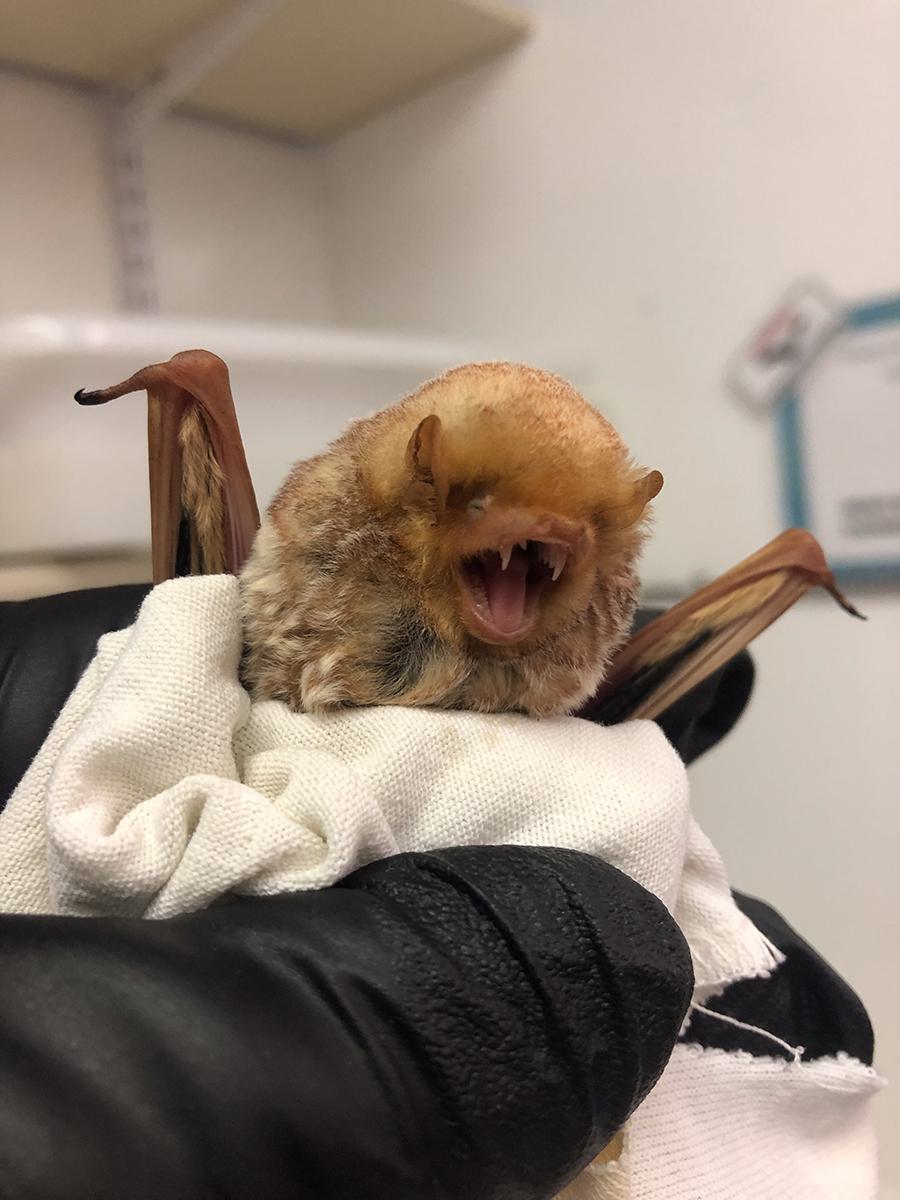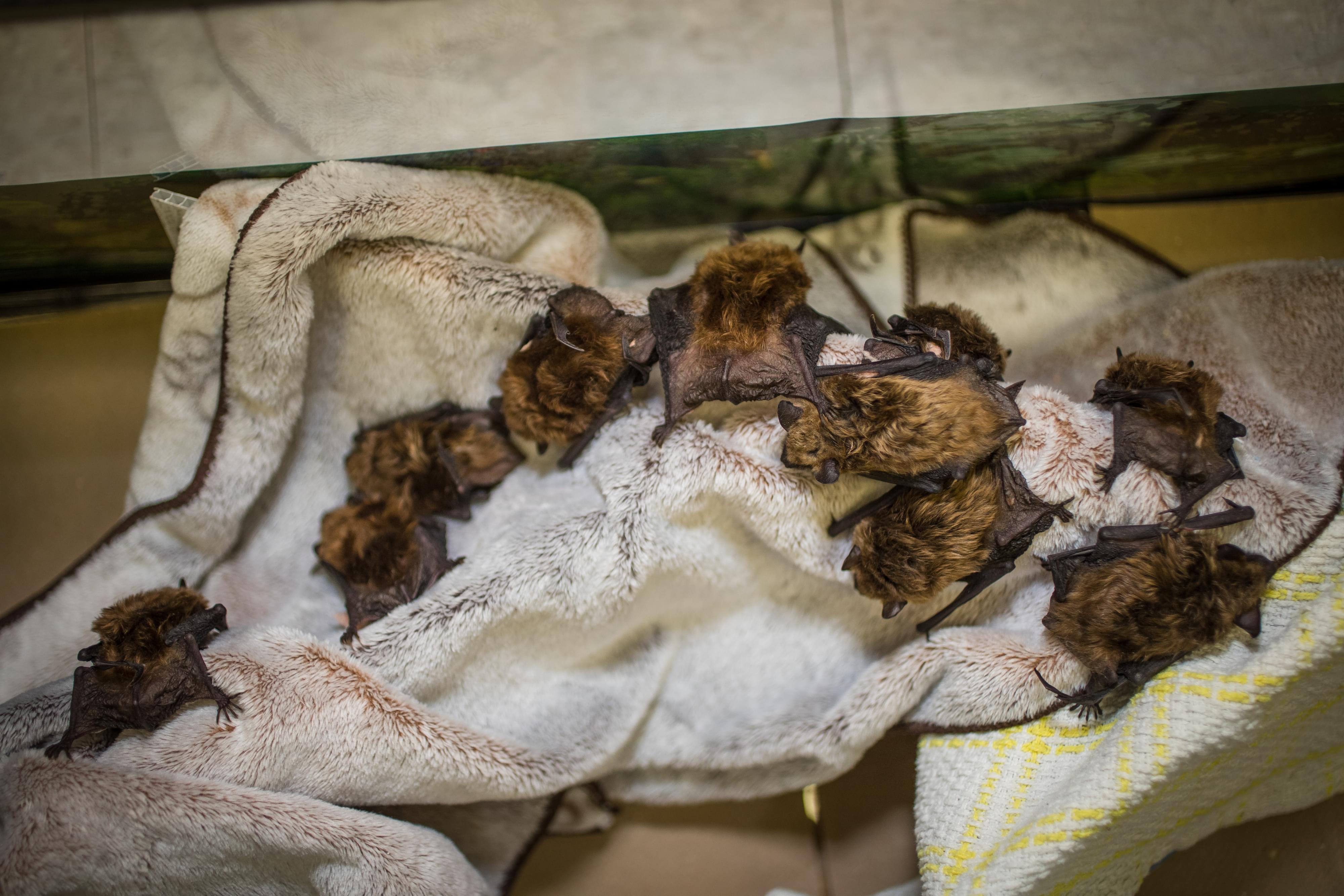Meetings the Bats of LabNature
Who are the bats sheltered at the Granby Zoo?
In the LabNature room that hosts them to continue their winter sleep, not a sound can be heard: 21 little bats, rescued from certain death in the middle of winter, find a lifesaving refuge here. Cared for, fed, and weighed, they will return to nature as soon as spring arrives. But until then, a team of experts ensures they lack nothing. But who are these mysterious little temporary residents? Let's introduce them!


The species of bats welcomed
Of the nearly 400 small winged mammals collected at the Granby Zoo over the past 10 years, 98% are big brown bats, the most common of the eight species observed in Quebec.
Despite its name, its body barely exceeds the length of your thumb, and its wingspan is about thirty centimeters. Besides this species, the Granby Zoo biologist, Louis Lazure, has also seen two little brown bats, a red bat, a silver-haired bat, and the largest of our native species, the hoary bat, with a wingspan of 42 cm.

Interesting facts to know!
Bats are part of the order Chiroptera, which includes more than 1,400 species worldwide.
The term comes from ancient Greek and means "hand wing." Their "wings" are indeed formed by four long fingers connected by a flexible and elastic skin membrane. The thumb is reduced and ends in a claw that allows the animal to cling or crawl.
This characteristic makes the bat absolutely unique in the animal kingdom as it is the only mammal in the world capable of flying (unlike "flying squirrels" which only glide).
An important role for such a small mammal!

The big brown bat is one of the five resident species in Quebec (it does not migrate). When winter comes, it must find a quiet environment with stable temperatures to hibernate. Human dwellings are among the places that can be targeted by the species.
They then enter a deep sleep that lasts nearly six months: their body temperature drops from 36º Celsius to about 4 to 6º Celsius. Additionally, their heart rate decreases to about 25 beats per minute.
Since they do not eat during this period, each moment of awakening forces them to draw on their reserves: if disturbed repeatedly, they can die.
Quebec's bats play an essential ecological role in our environment: all are insectivores.
They thus contribute to the regulation of insect populations often considered harmful to agricultural and forestry activities. In addition to climate change, habitat destruction, the disappearance of suitable hibernation sites, and the decline in insect numbers, bats face a sneaky disease, white-nose syndrome. This fungus, which affects colonies during hibernation, is responsible for the decline of many populations in North America: it appeared in Quebec in 2010.
Given all these threats, the role of a Refuge like the one at the Granby Zoo and its importance becomes clearer: each individual recovered at the Zoo carries an additional chance of seeing Quebec's bat populations recover and continue their vital role in our ecosystems.
In 2025, the Refuge will celebrate its 10th anniversary: we can only hope that other similar initiatives will emerge throughout the province to continue this important mission.


